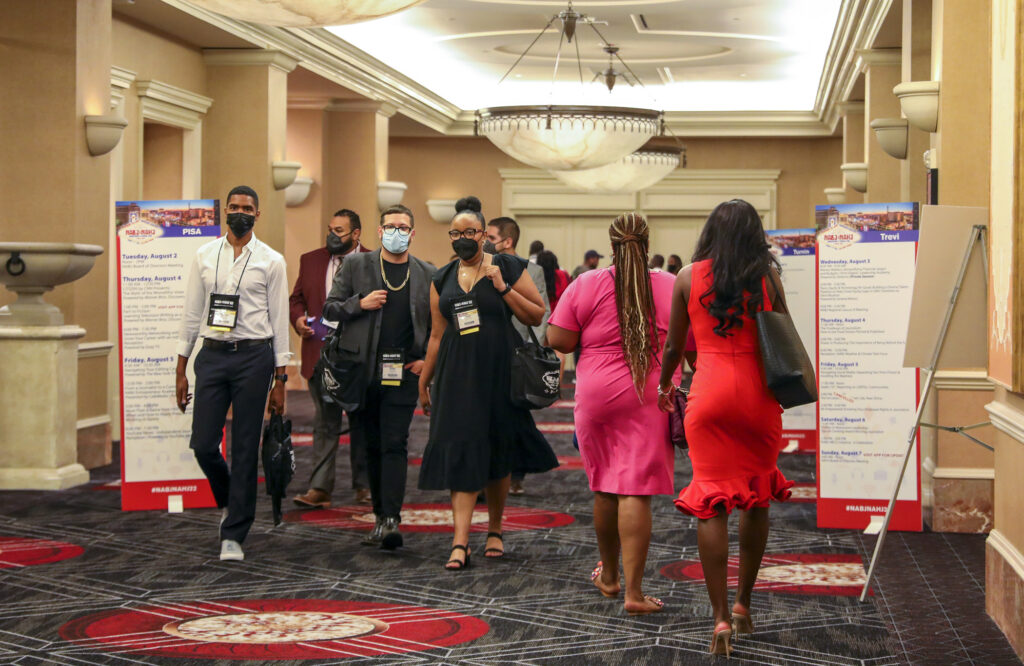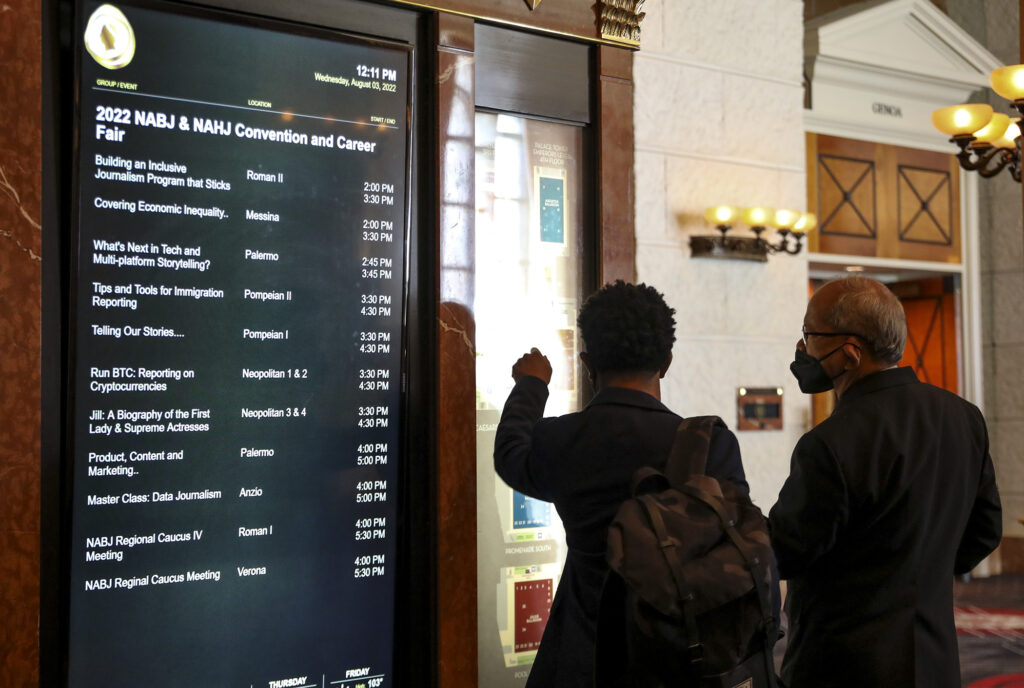Despite big commitments to improve diversity, newsrooms’ progress remains slow

About two weeks before the announcement of the industry’s highest honors, dozens of journalism groups signed an open letter to the Pulitzer Prizes with one request: that officials add language requiring newsrooms to participate in a diversity survey in order to be considered for the award.
“Our country is reckoning with racial inequity and many in the journalism industry can’t or won’t provide essential newsroom transparency on staff diversity,” the letter read. “If we can’t collect crucial data, how do we expect to improve newsroom diversity and represent our communities?”
In April, Nieman Lab reported that there was “crushing resistance” by news organizations to participate in an annual diversity survey by the News Leaders Association. The group planned to have 2,500 organizations participate, according to the open letter, but in the end only 303 completed the survey.
Although news organizations have emphasized the importance of racial diversity, equity and inclusion — particularly in the aftermath of the 2020 “racial reckoning” following the murder of George Floyd and the subsequent protests against racial injustice — researchers and journalists say efforts continue to fall short.
In 2019, the most recent year available, the News Leaders Association’s ASNE Newsroom Diversity Survey found 78% of full-time newsroom employees are white, with Blacks and Hispanics making roughly 7% each.
Jeffrey Gottfried, senior researcher at the Pew Research Center, a nonpartisan think tank, called the diversification of the journalism industry “a work in progress” based on a survey he and his colleagues conducted earlier this year where fewer than half of 12,000 journalists said their organizations make issues of diversity and inclusion a major priority.
For Newsday reporter and NAHJ financial officer Keldy Ortiz, the current state of diversity within the news industry is "frustrating."
“While there have been news organizations that are trying to make efforts, you see a lot of organizations getting leaner and therefore cutting staff,” he said. There’s also a lot of frustration among journalists of color who struggle to bring about change within legacy organizations, “so they have come to this crossroads where they decide if they should stay or they should leave.”
While Ortiz thinks it’s great that some news organizations have moved to conducting listening sessions and training focused on diversity, equity and inclusion, he said they could also include strengthening pipelines for younger reporters.
“I think the time for talking is somewhat over and now the time for making decisions and doing it is the action at this point in time,” Ortiz added.
Over the last several years, some national news organizations have begun to publicize their own diversity data and goals, but because these organizations do so only on their own websites, the data lacks the context that defined the ASNE survey's industry-wide snapshot.

Diversity reports from two of the largest newspapers in the country show that while there have been moderate increases in the share of journalists of color, the majority of the staff remains white.
From 2017 to 2022, the percentage of white editorial employees at the Washington Post decreased from about 74% to 66%, the newspaper's workforce demographics show. At the same time, those who identified as Hispanic or Latino increased from nearly 4% to 5%. But the share of Black staff stayed flat at 9% during this period of time.
The same is true for the editorial staff at the New York Times, according to the company’s Diversity and Inclusion report. The share of its Black editorial staff remained stagnant at roughly 9% from 2015 to 2020, while other groups saw modest gains. Overall, the share of white staff decreased from 78% to 70%, during that period of time.
"While these charts show progress, they also show that we continue to have gaps, particularly in representation of people of color in leadership — underscoring why we set a goal to double the share of Black/African American and Latino/Hispanic colleagues in leadership by 2025," the authors of the New York Times report wrote. About three-fourths of the newspaper's editorial leadership identifies as white.
Among other initiatives to make its culture and editorial processes more diverse, equitable and inclusive, The New York Times announced last year that it would create a new Culture & Careers Department with more than a dozen new roles paired with new career development programs. Leaders within the organization said the goal is to build an inclusive team culture to ultimately enhance the paper's editorial content, foster greater collaboration and expand its audience.
In 2015, ProPublica started producing reports that include the racial breakdown of staff as well as diversity and inclusion efforts within the organization. But there is still room to grow, said Melissa Sanchez, an investigative reporter and co-chair of the organization’s diversity committee.
ProPublica is a nonprofit founded in 2007 that specializes in investigative journalism, which Sanchez said is a niche field and one that has been “traditionally a very white part of the industry, even more than most newsrooms.”

Overall, 58% of ProPublica’s editorial staff are Non-Hispanic whites, which falls in line with the racial makeup of the white population in the United States, according to the 2020 U.S. Census. However, the percentages for Black or African American (7%) and Latino/Hispanic (9%) are lower than the percentage recorded in the 2020 Census.
“I don’t think our staff reflects the racial makeup of this country so we’re not there yet,” Sanchez said. “And that’s particularly the case when it comes to editorial managers.” Some of the people with the most experience, she added, tend to skew white.
A priority for the news organization, she said, is to figure out how to develop internally or externally journalists into the editing ranks, particularly those of color. Non-Hispanics whites make up 65% of managers at ProPublica. Managers are defined as staff members who supervise other people and do not include all editors.
This aligns with findings from another Pew Research study. In 2018, the nonpartisan think-tank based in Washington, D.C., found that newsroom workers 18 to 49 are slightly more likely to come from more racially and ethnically diverse backgrounds with 74% being non-Hispanic white, an 11% drop from white newsroom workers 50 and older.
Sonia Rao, co-chair of the Washington Post Guild's diversity and equity committee, said she recognizes change takes time and recent conversations about increasing diversity and bolstering pathways for young people of color to grow within newsrooms makes her "cautiously optimistic."
The union's duty is to make sure everyone works together to bring about change, she added, "that there are actually pathways for people and that we are ultimately serving our readers. That's one of the battles, that diverse newsrooms serve a diverse audience, so I think, I hope, that we're on track there as an industry."
Amanda DeJesus is a senior at Seton Hall University where she studies journalism and political science with a minor in Spanish. She is interested in pursuing a career in print/digital and audio journalism. Reach her at amandadejesus849 [at] gmail [dot] com and on Twitter @itsamandaparis.